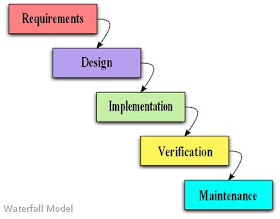Question: What is a Product or Project Backlog?
Answer: A product or a project backlog is a prioritized list of requirements with a rough size and complexity estimate of each requirement. Hence, the backlog has 3 components: requirements, priority, rough size and complexity estimate.
Question: Who provides the requirements in Product or Project Backlog?
Answer: It is typically the role of a product owner or a customer to provide the requirements. However, sometimes analysts from the development team can work with product owner or customer to define the requirements. The idea is for the product owner or customer to work with the team to discuss the requirements during the sprint planning meeting.
Question: How are the requirements written?
Answer: There is no standard way to write the requirements. One team can simply write “users sign in” and another could write “users should be able to sign in with their email address and password”.
Question: Is additional information captured in the requirements?
Answer: Yes and no. It depends on project to project and requirement to requirement. Something like Forgot Password might not need further information but something like User Registration might have various notes on each field like date of birth (should be 13 or more) and password (strength).
Question: Do we require “acceptance tests” for the requirements?
Answer: Yes, highly recommended. However, having acceptance tests for all requirements would be too time consuming. Also, the team and product owner or customer should discuss the acceptance tests for each requirement in detail during the sprint planning meeting. It is useful to remember that Agile is collaborative and both the customer or product owner and team should discuss and agree on “definition of done” before the start of a sprint.
Question: Do we need details on everything for each requirement on the backlog?
Answer: This is not really required, although nothing stops you from going this route. However, the closer the requirements are placed to the current sprint, the better they should be defined.
Question: Do we need to estimate each requirement in the backlog?
Answer: Yes, it is recommended that each requirement be estimated. The requirements far from the current sprint can only be coarse grained and hence roughly estimated. However, this gives product owner or customer a rough idea of the project size and number of sprints required to complete a project. The final number of sprints could be more or less, but at each stage the visibility of progress would be self evident.
Question: How is the estimate done - in days or in hours?
Answer: You could use either, although relative estimation would work better. The team and product owner get together at sprint planning meeting. They pick up the simplest requirement from the list and arbitrarily assign a number to the same [say 1 or 1 requirement point or better still 1 coffee cup]. All other requirements are estimated in similar units [requirement points or coffee cups]. At the end you total up the points. At first the team could take a guess at the amount of points it could complete in a sprint. After a few sprints, they would have visibility of how many points they should ideally take. This estimation technique works well to give you rough idea of work that can be picked up. Its not supposed to be used for precise calculations or a point in horizon rather just aim for a region in horizon.
Question: How do we estimate - based on size or complexity?
Answer: The short answer to that is both! Entering 1000 records in database might not be complex, but time consuming and on the other hand investigate SOA performance issues in reports in a clustered environment may be complex and hence, difficult to even give a precise estimate on. And in some cases, you might want to factor in both. Hence, you estimate both from difficulty level as well as effort required.
Question: How is the backlog prioritized?
Answer: It is the responsibility of product owner or customer to prioritize the backlog. The team can provide assistance in the same though. The backlog is prioritized by factoring in risk factor of not doing the requirement right now and opportunity by delaying the requirement decision later. In simpler terms, risk factor, dependencies and business value would help the team decide the priority.
Question: Does the backlog provide any tracking?
Answer: Yes, you can make a simple tracking of completed/ pending items. You can also track number of requirement points completed in a sprint and based on average requirement points completed in a sprint and total requirement points pending, you can get an idea of the projected completion date. The average requirement points completed in a sprint is also called velocity.
Question: Is there a low level tracking involved?
Answer: Yes, you can divide each requirement into tasks. Each task can be estimated in number of hours it would take to complete. This is typically done only for a given sprint and is called a sprint backlog and is maintained separately from product or project backlog.
Question: Is the product or project backlog only made once - at the start of a project?
Answer: No! There are only two rules. First,the product or project backlog should be revised and continuously updated based on emergent scenarios and situation. Second, the backlog for the sprint currently in progress can’t be changed. The backlog for upcoming sprints can be changed almost completely. In a fixed price scenario, this might mean you need to swap new functionality with existing functionality.






